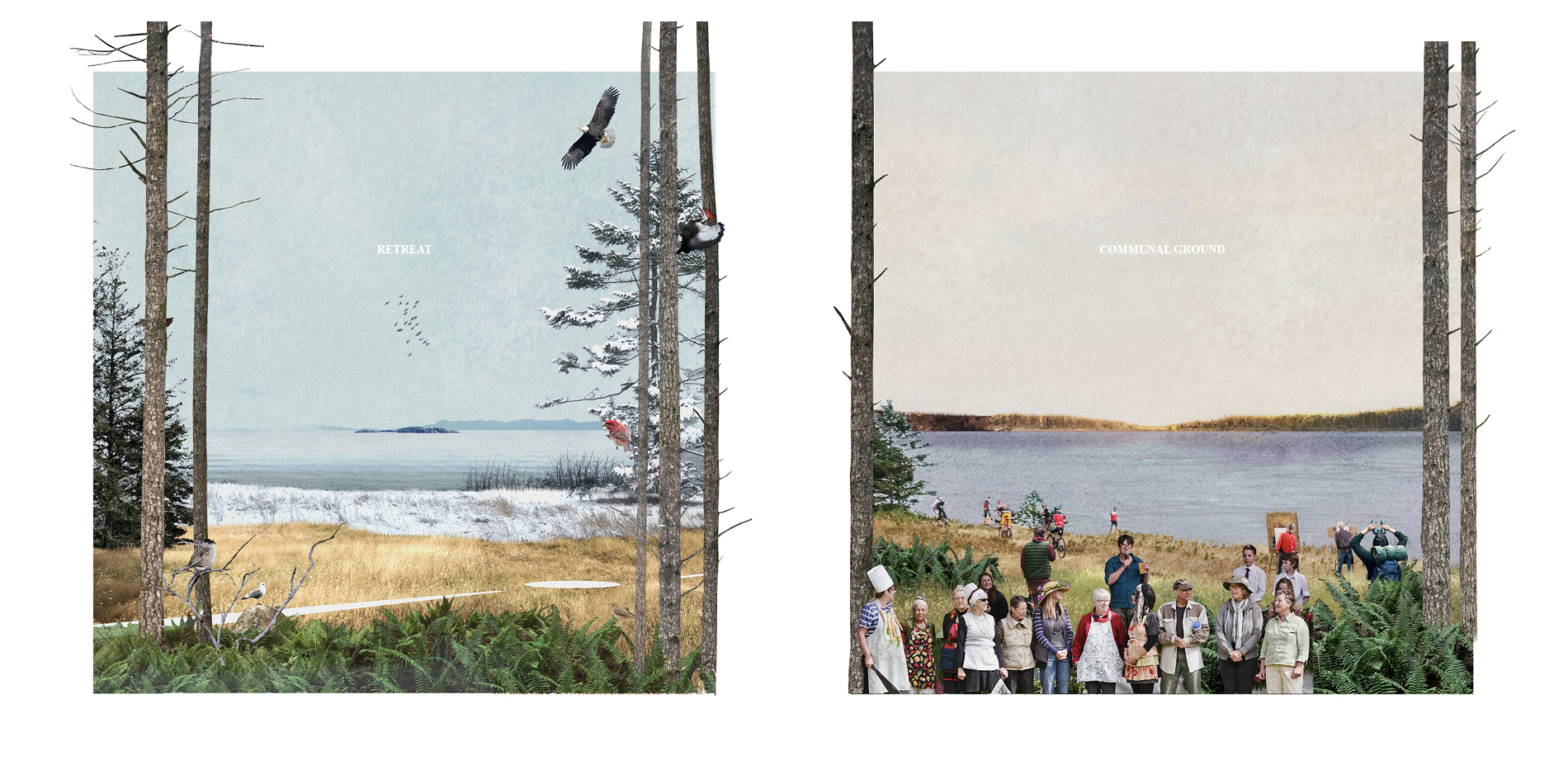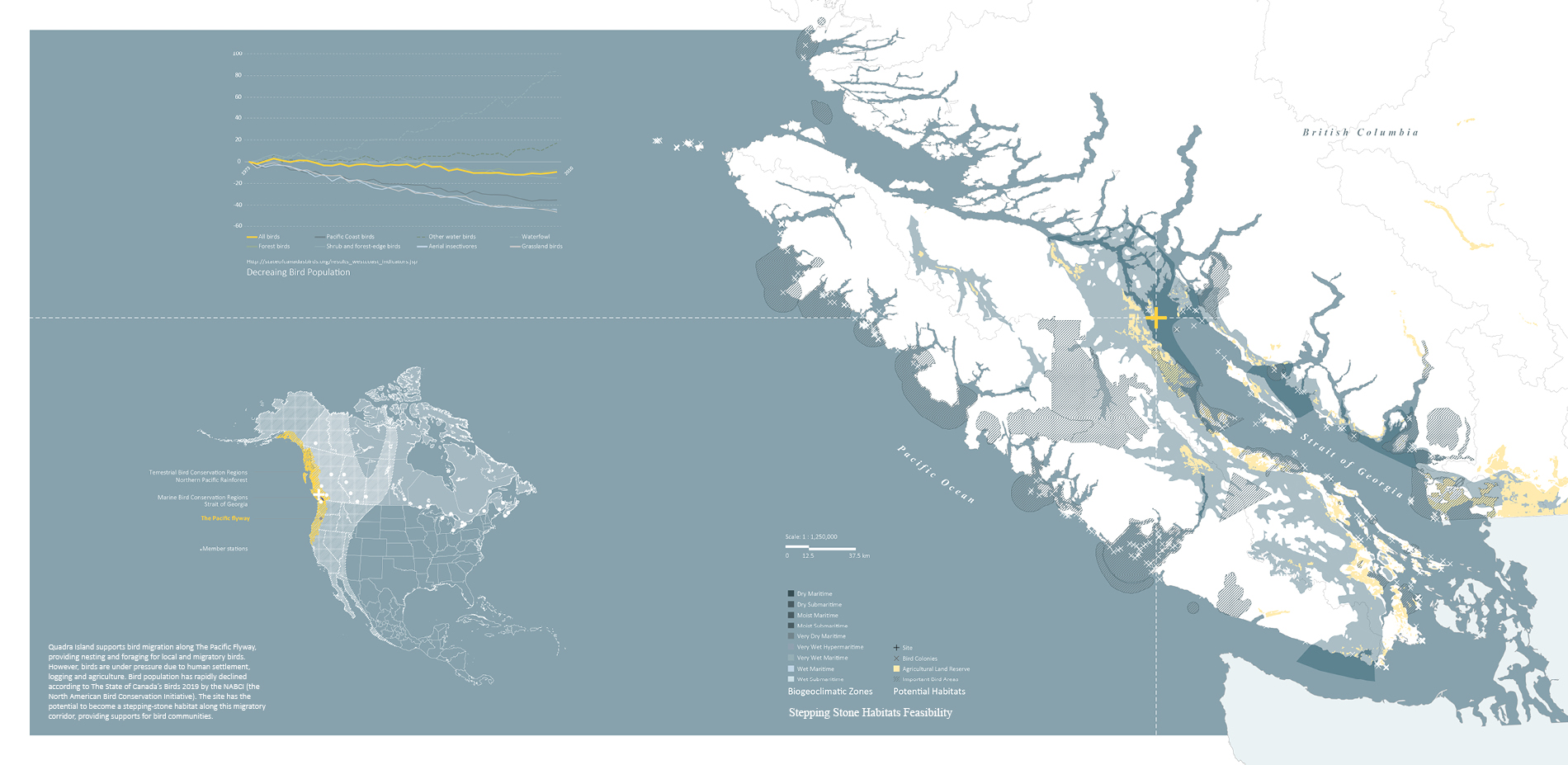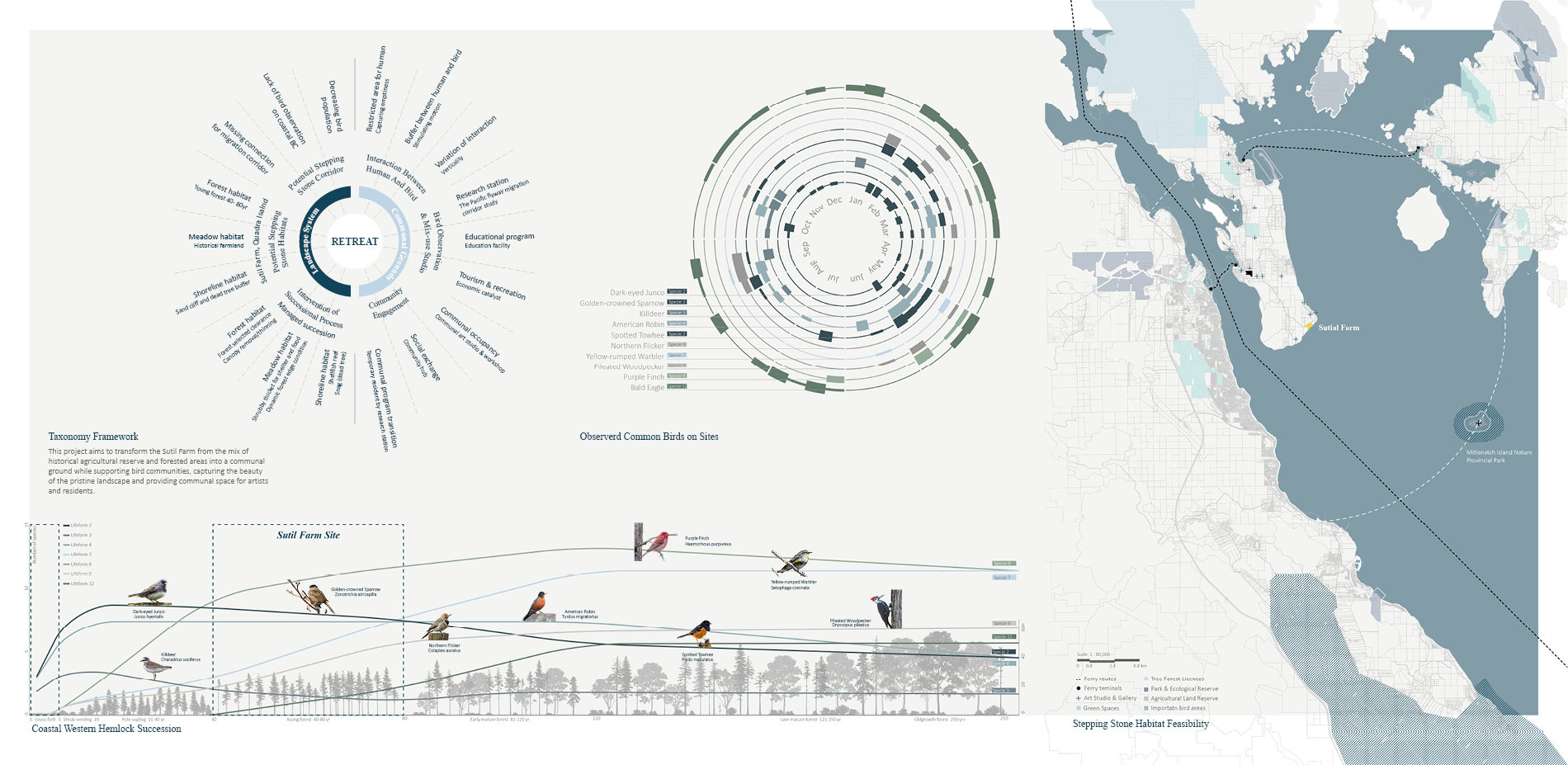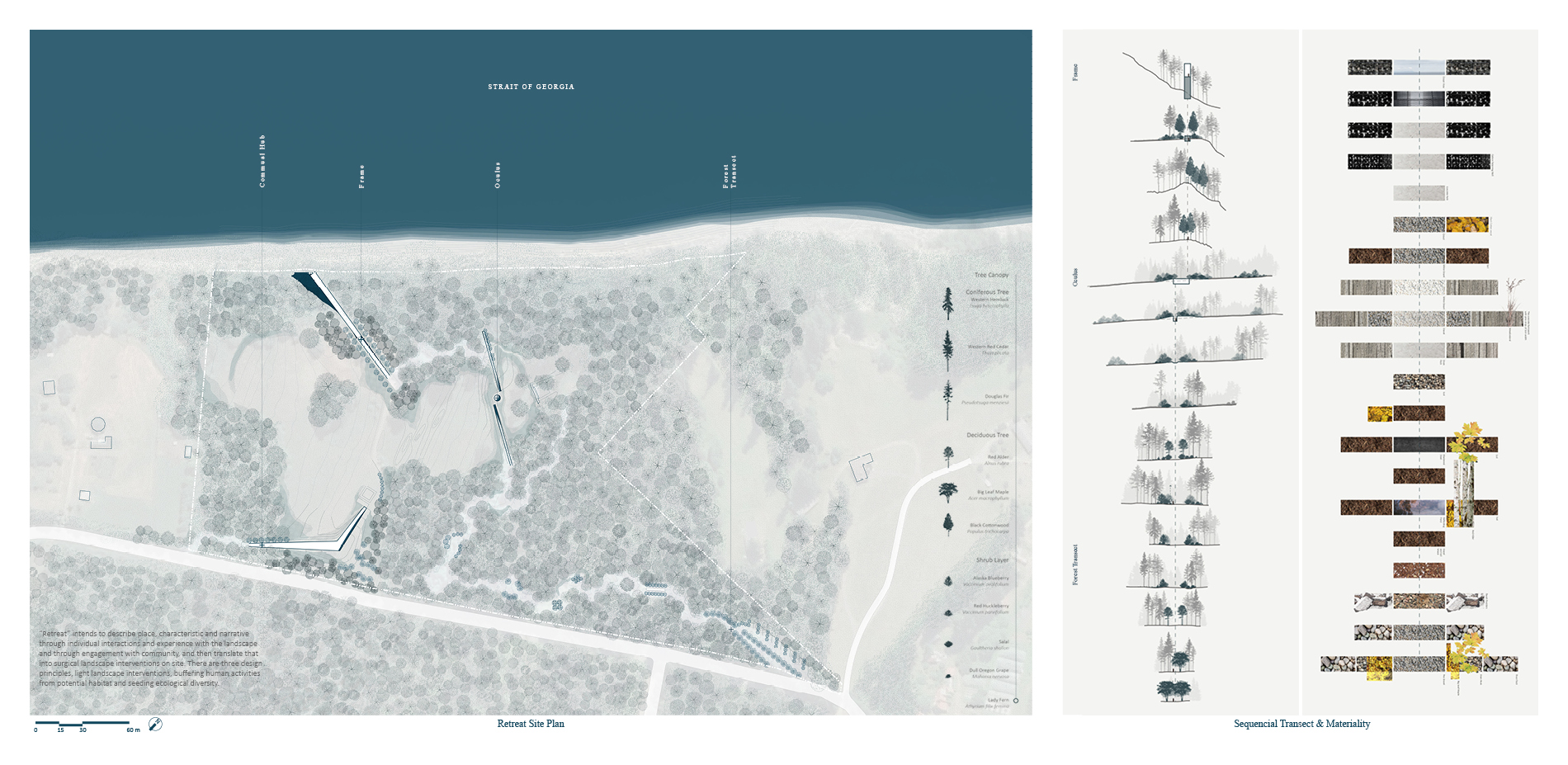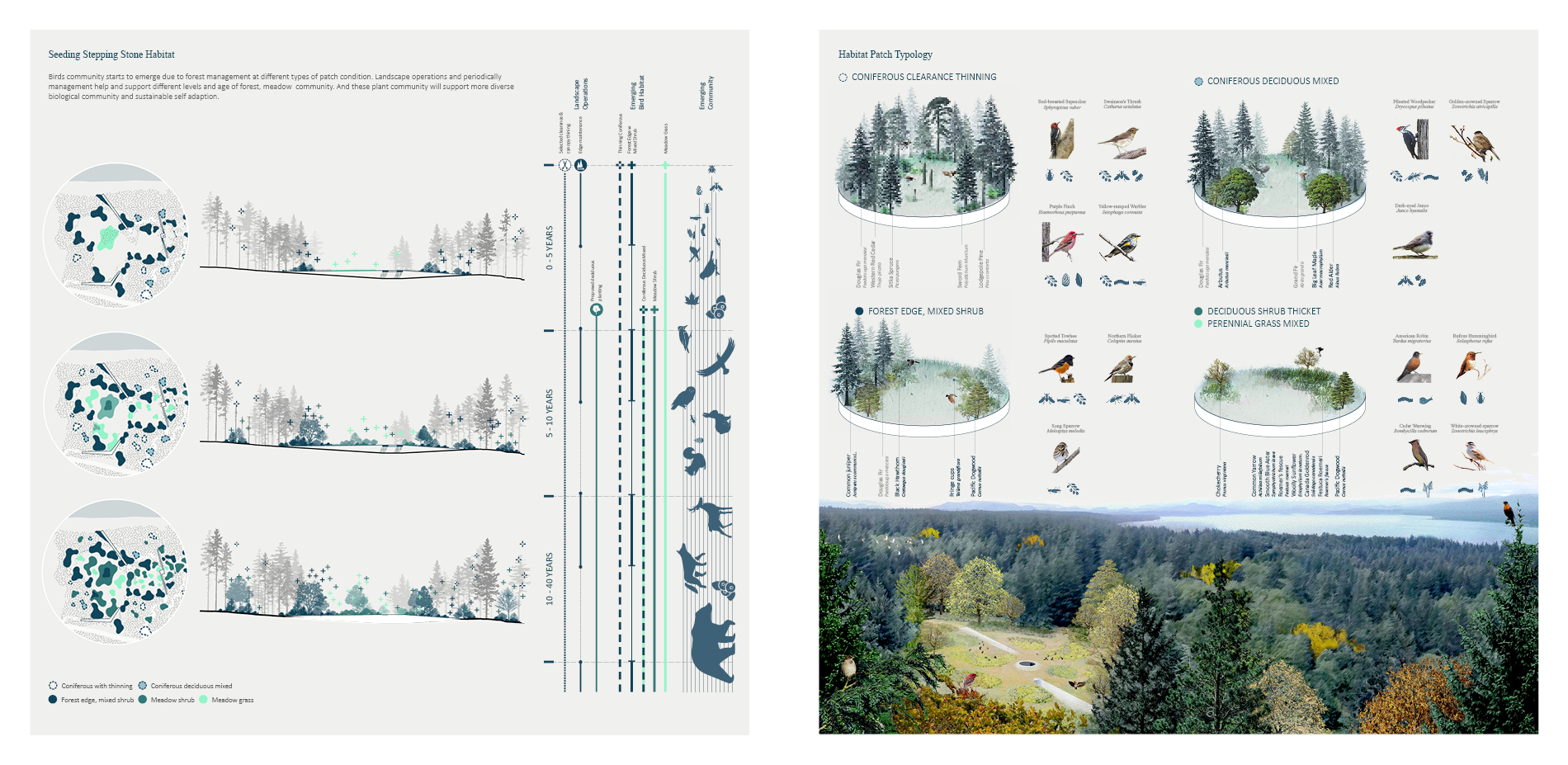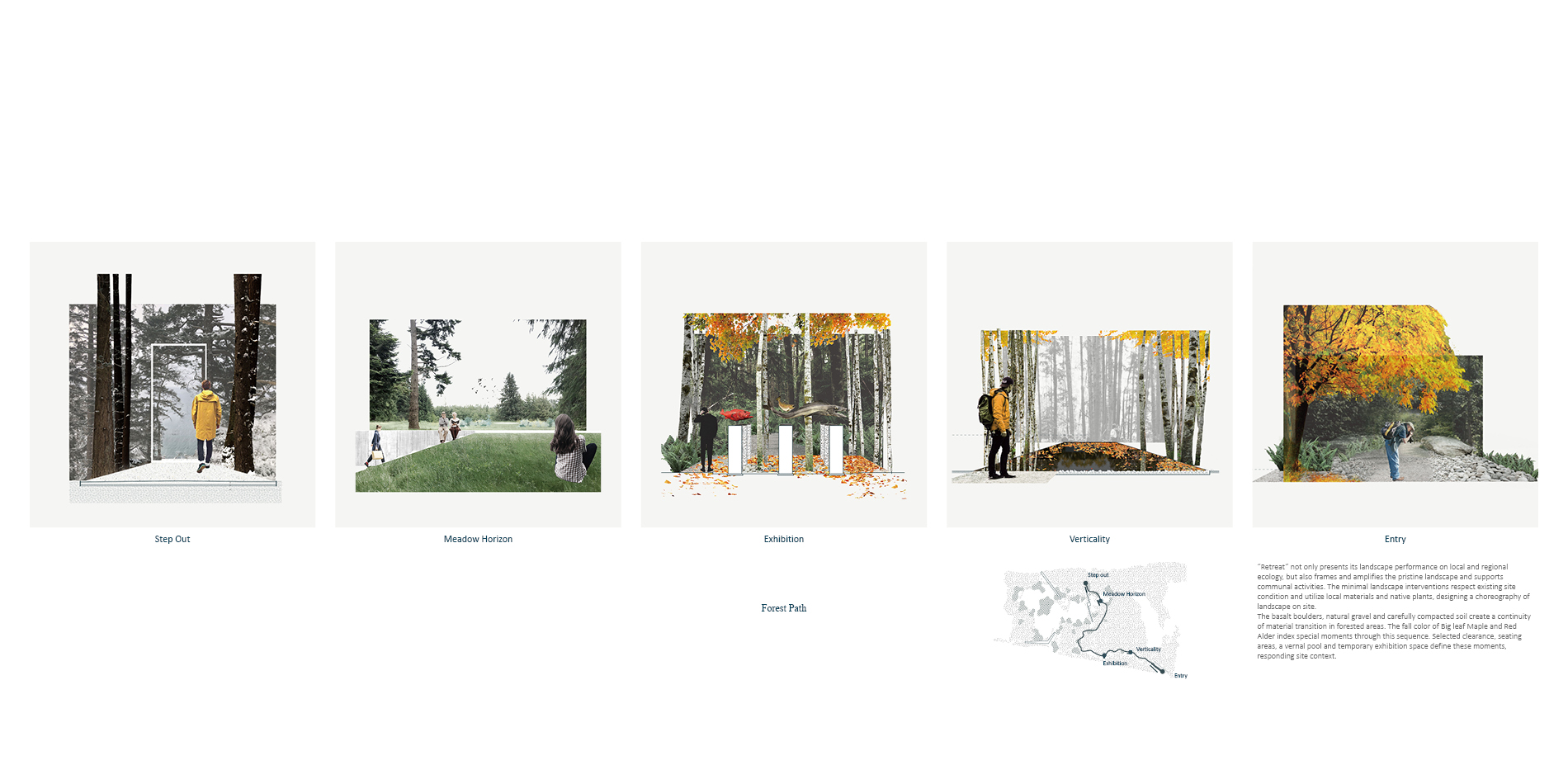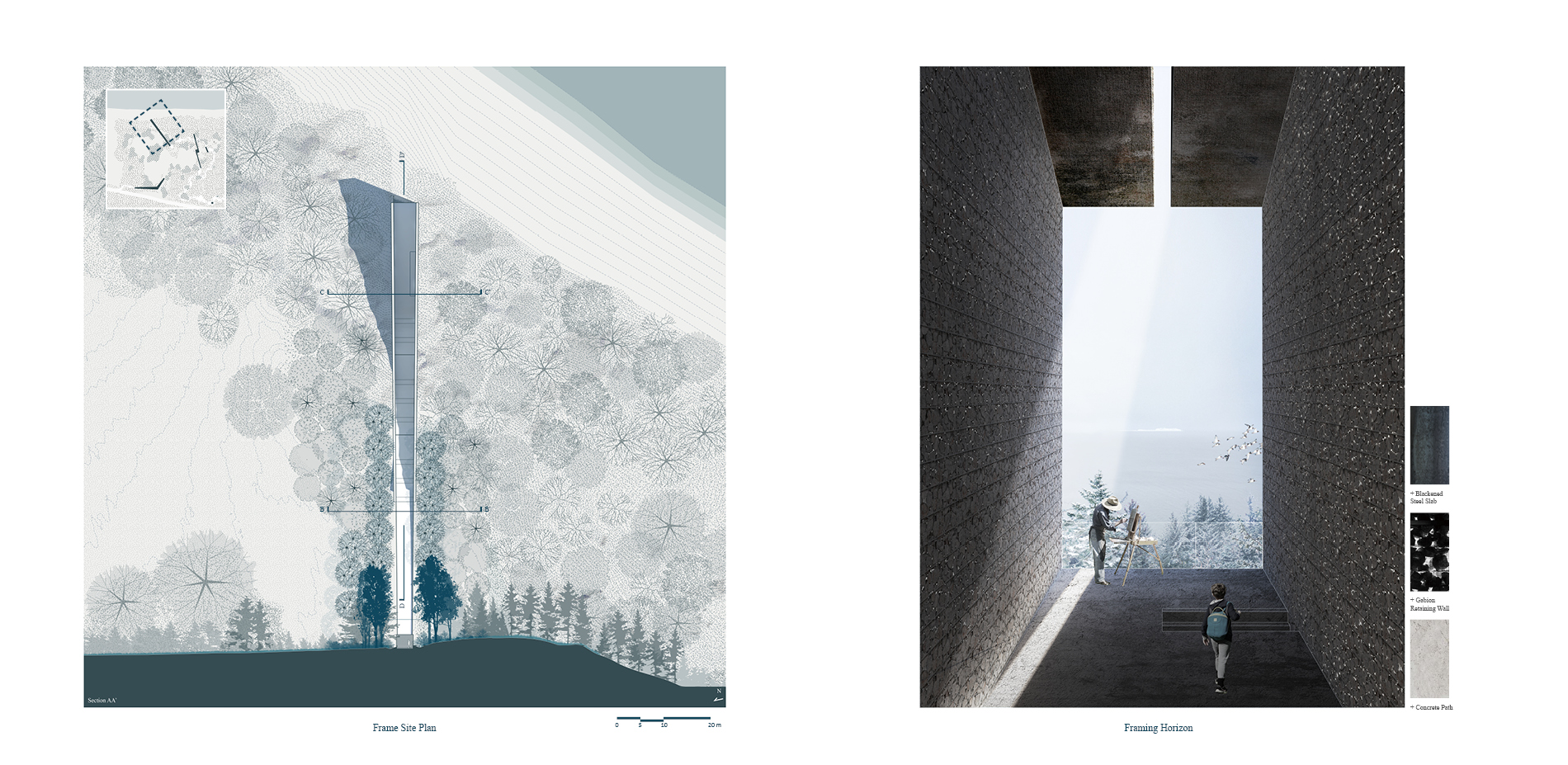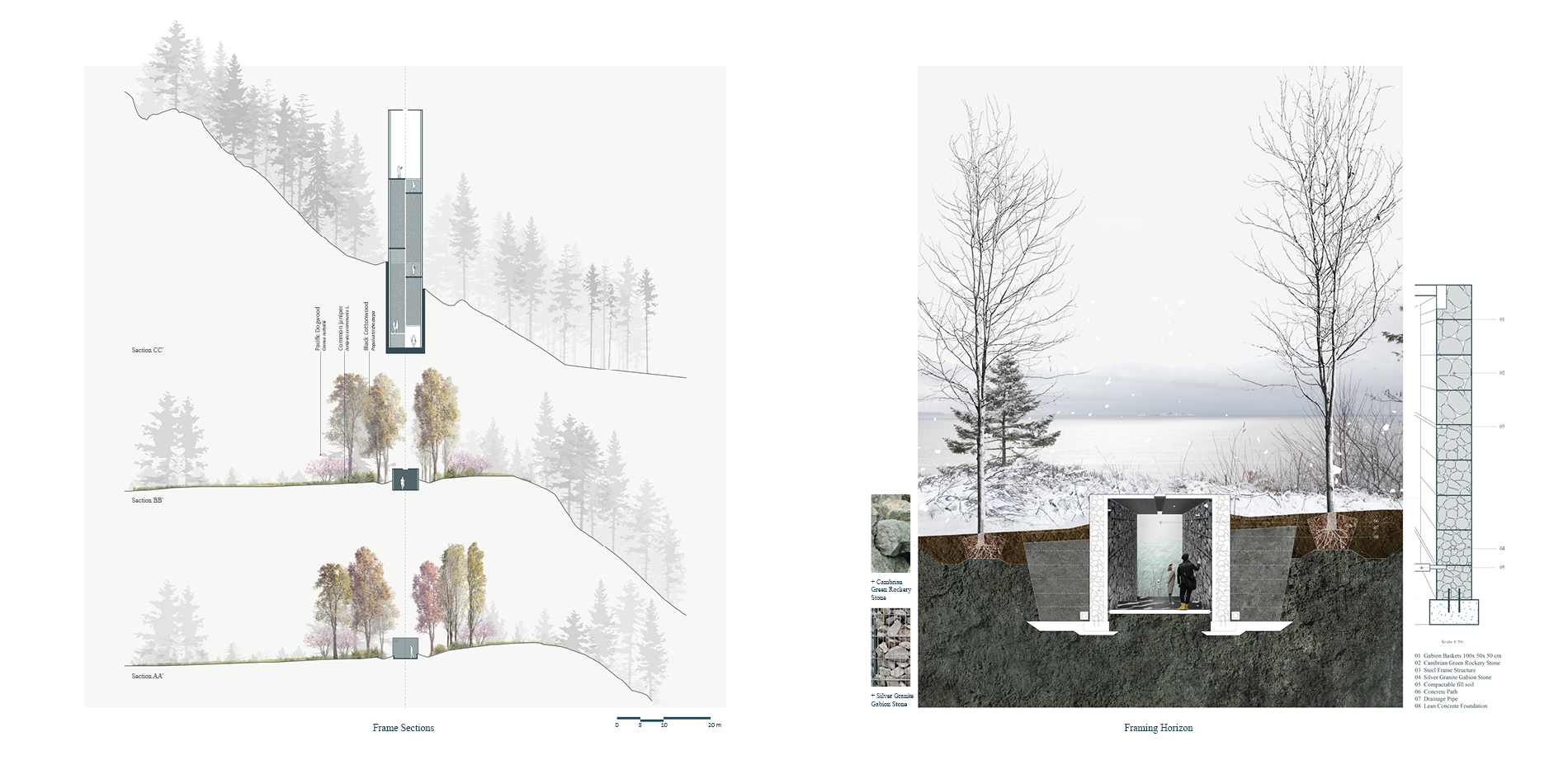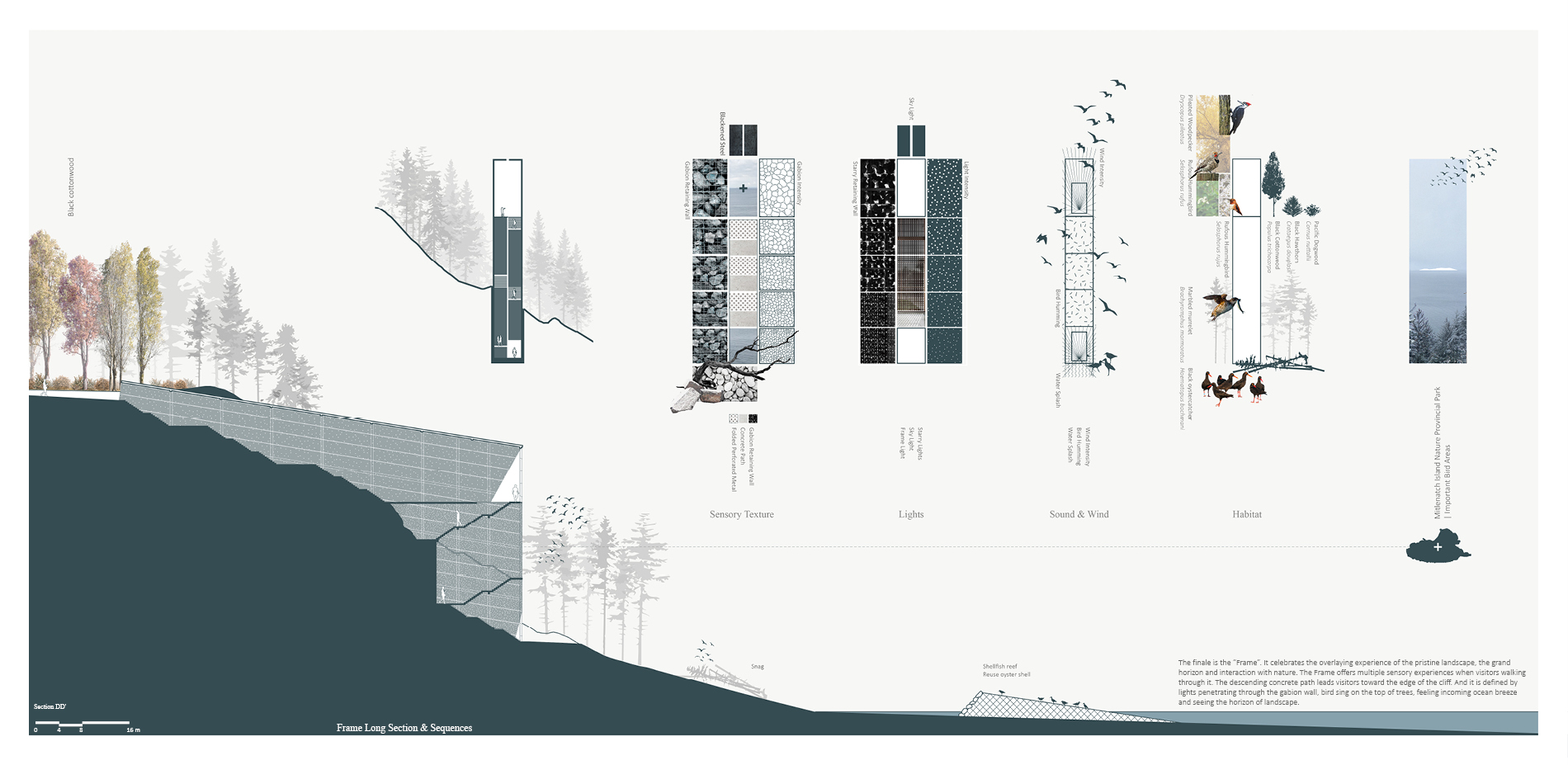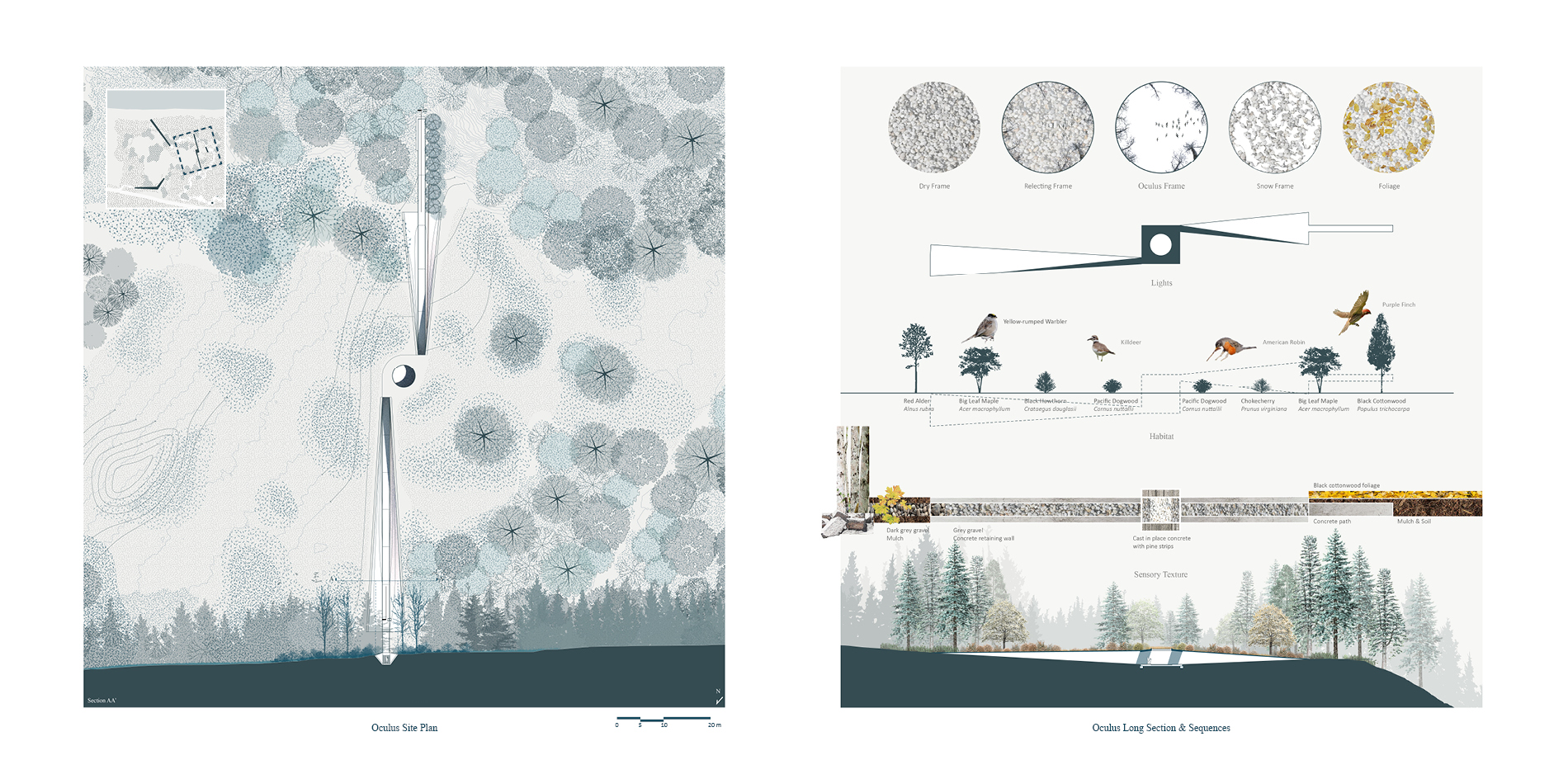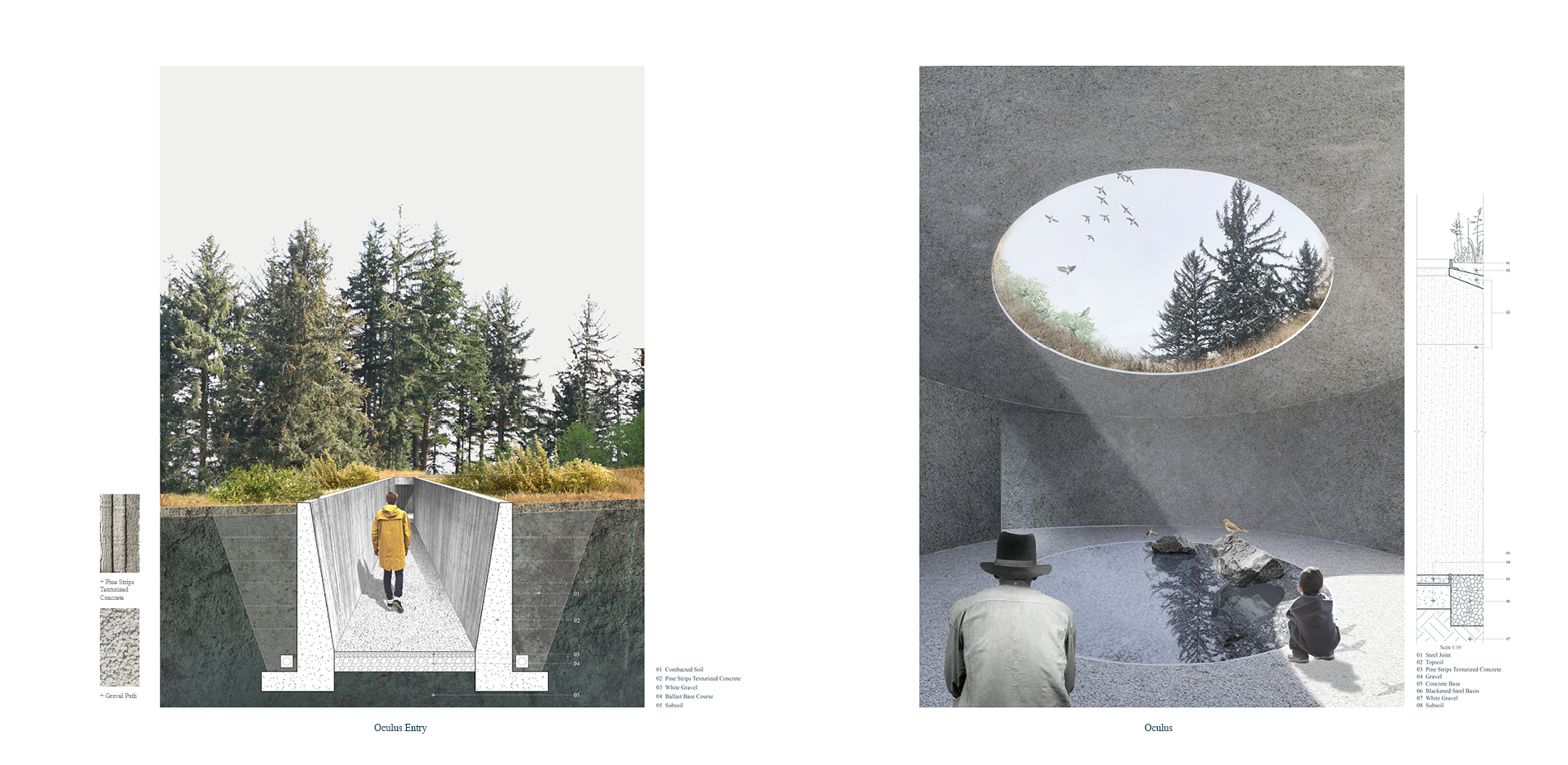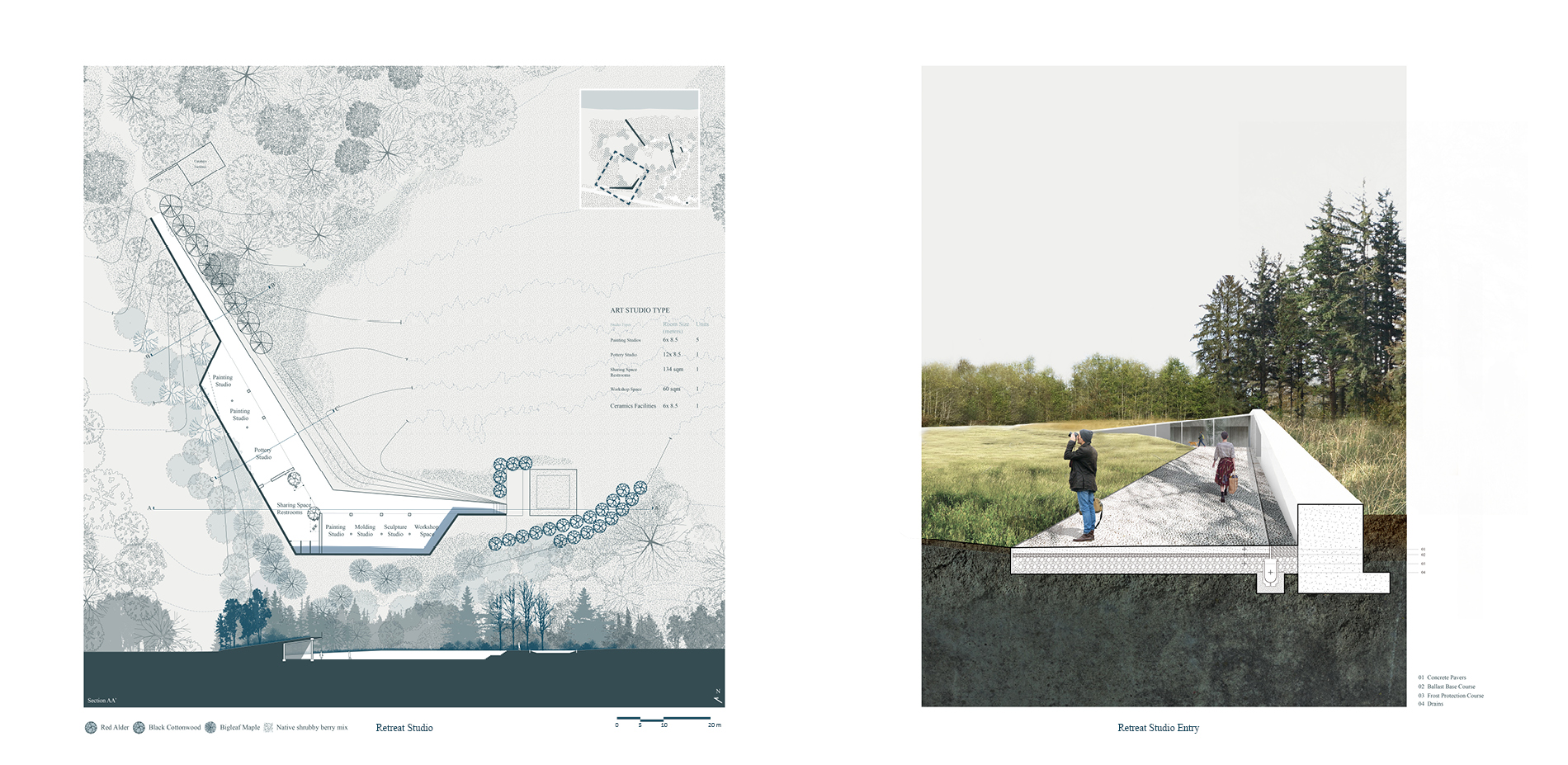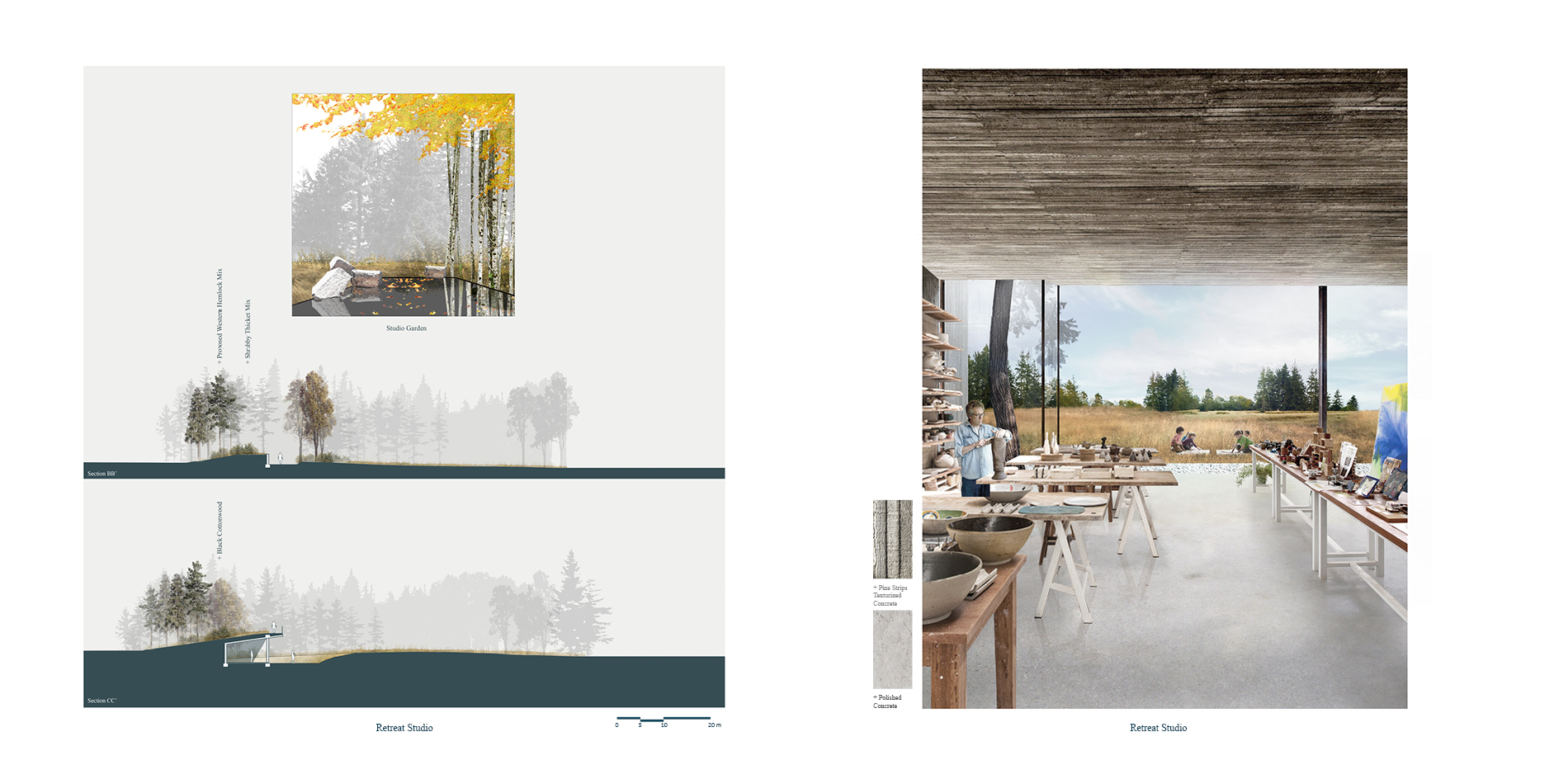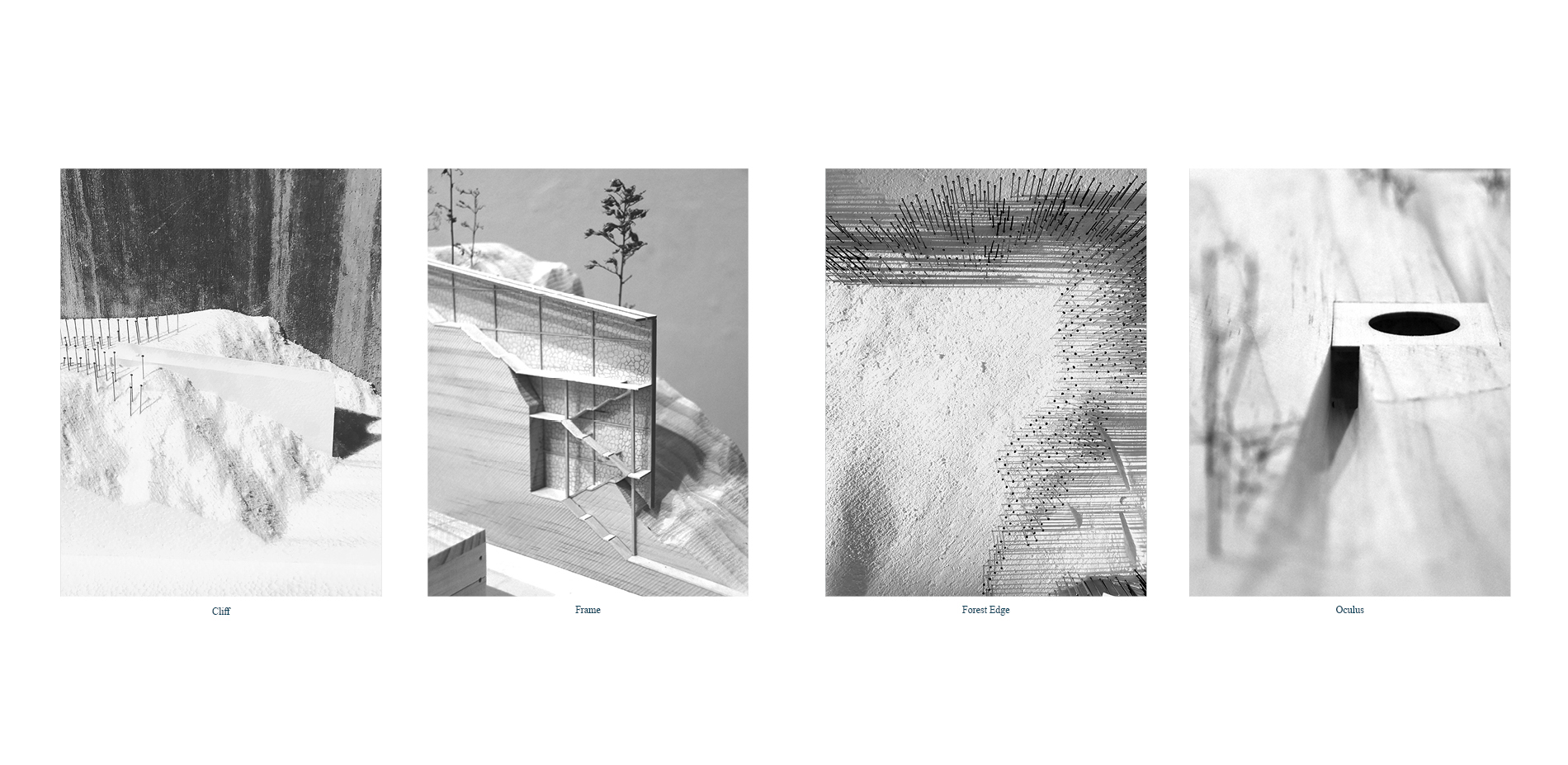Retreat: Defining Quadra Island's Rural Identity
Honor Award
Student Collaboration
Quadra Island, British Columbia, Canada
Yaqun Cai; Szu Hsuan Lee
Faculty Advisors: Rebecca Popowsky; Mayur Mehta
University of Pennsylvania
This project on Quadra Island in Vancouver, British Columbia, is a collaboration that melds architecture and landscape architecture. You can tell that the students worked together on each image; the architecture responds well to the site, and in turn, the site speaks to the architecture. Everything about it is consistent: from the installation components to the landscape of adaptation, to the materials and detailing—it shows they collaborated through the whole process.
- 2021 Awards Jury
Project Statement
Quadra Island is the largest island in the Discovery Island Archipelago, nestled between the east coast of Vancouver Island and the Sunshine Coast of British Columbia, Canada. This project opens a conversation and imagination on rural landscape. It provides an alternative for the rural landscape and its future development. This project not only intends to create balanced interaction between human and the environment but also to stimulate ecological diversity with managed forest and meadow succession. The site functions as a steppingstone habitat along the Pacific Flyway, supporting bird migration. “Retreat” builds a new relationship between rural locales and bird habitat and captures Quadra Island’s spectacular natural landscape.
Project Narrative
This project is landscape interventions for seeding habitat diversity and communal activities. The location is in Sutil Farm, Quadra Island, in British Columbia which sits approximately 40m above sea level, a top of a highbank sandy oceanfront bluff. The site is located on Quadra Island’s southernmost point of land, and has some of the island’s most fertile soils. The land is comprised of a mix of a mixed native young forest, open meadow and sandy cliff, offering diverse wildlife habitat.
OBSERVATION & POTENTIAL
Our observation of birds on-site, the sublime landscape, and our interviews at local art studios on the island inspired the idea of combining wildlife habitat with communal activities in order to capture Quadra’s identity and support local & regional ecology.
Part of an archipelago in the Strait of Georgia, Quadra island has a rich and diverse forest cover. And it supports bird migration along The Pacific Flyway, providing nesting and foraging for local and migratory birds. However, birds are under pressure due to human settlement, logging and agriculture. Bird population has rapidly declined according to The State of Canada’s Birds 2019 by the NABCI (the North American Bird Conservation Initiative). The site has the potential to become a stepping-stone habitat along this migratory corridor, providing supports for bird communities.
On another front, Quadra Island is surrounded by the Coast Mountain range to the east and snowcapped peaks of Strathcona Provincial Park on Vancouver Island to the west, the island enjoys a pristine setting in the Pacific Northwest. And there are over 30 independent artist studios located on the island, inspired by this pristine landscape.
This project aims to transform the Sutil Farm from the mix of historical agricultural reserve and forested areas into a communal ground while supporting bird communities, capturing the beauty of the pristine landscape and providing communal space for artists and residents.
DESIGN PRINCIPLES
“Retreat” intends to describe place, characteristic and narrative through individual interactions and experience with the landscape and through engagement with the community, and then translate that into surgical landscape interventions on site. There are three design principles, light landscape interventions, buffering human activities from potential habitat and seeding ecological diversity.
First, this project creates landscape insertions with minimal disturbance on existing site conditions. It creates forest paths under the guidance of forest management, connecting nodes and an adjacent road, and design nodes embedding existing landscape. Using local material and native plants place visual index, guiding visitors through the forest and site. The forest management would free up space for deciduous trees and understory within coniferous dominated forest. Secondly, it uses understory planting and topography change building landscape buffer between human activities and potential habitat. Lastly, these buffers not only function as separation, but also gradually extend to ecological patches as emergent habitats and creates dynamic forest edge conditions, helping to transform the site into a stepping-stone habitat.
LANDSCAPE OPERATIONS
Based on the site existing conditions, there are three major potential habitats, forest, meadow and shoreline. Observed bird communities would be categorized by their preferred nesting and foraging locations[1](Species type 1-6). There are three major landscape operations targeting these three types, for building the stepping-stone habitat.
Young Forest
The site is located in the coastal western hemlock zone, which has a typical mild and maritime climate. It is dominated by Western Hemlock, Western Red Cedar and Douglas-fir. Red Alder and Bigleaf Maple frequently become established in disturbed sites. The existing forest within the site is young, which has nearly complete canopy closure, eliminating most ground cover. However, these ground cover and shrub layers are critical for bird species 1 through 6, American Robin, Spotted Towhee, Golder-crowned Sparrow etc. which nest and forage on the ground and in low brush. First, Selected canopy removal or thinning produces abundant slash and the reestablishment of a dense ground layer[2]. It promotes greater deciduous growth for species that nest and forage in deciduous trees. Second, selected clearance of forest for species nesting, foraging on the ground in low bush, promotes denser ground and shrub layers.
Meadow
Open meadow on the west portion of the site was historical agricultural pastureland. Seeding herb and deciduous shrub layer provides nest and forage for Species 2 through 6, which are normally associated with open habitats. And it provides thermal shelter during winter for overwintering birds and food supply. The transition between existing forest and meadow is abrupt, however, it is critical for ecological diversity and exchange. Proposing active edge seeding and maintenance would build a dynamic and diverse edge condition.
Shoreline
Proposed shellfish reef habitats provide food sources for shore birds, marine birds, and serve as protection for the sandy cliff, reducing shoreline erosion. Dead tree branches from canopy removal and clearance can be placed along the shoreline for alternative habitats.
There are four types of habitat patches, emerging over time and through annual or interim management and maintenance, coniferous clearance and thinning, coniferous deciduous mixed, forest edge & mixed shrub and deciduous shrub thicket & perennial grass mixed. These typologies would seed the steppingstone habitat, supporting more wildlife from adjacent areas.
SURGICAL DESIGN
“Retreat” not only presents its landscape performance on local and regional ecology, but also frames and amplifies the pristine landscape and supports communal activities. The minimal landscape interventions respect existing site conditions and utilize local materials and native plants, designing a choreography of landscape on site.
The basalt boulders, natural gravel and carefully compacted soil create a continuity of material transition in forested areas. The fall color of Bigleaf Maple and Red Alder index special moments through this sequence. Selected clearance, seating areas, a vernal pool and temporary exhibition space define these moments, responding site context.
Stepping out of forest, “Oculus” would be the first anchor point, offering intimate interaction between people, birds and landscape. The descending gravel path, surrounded by shrub buffer, and bird-sing lead visitors toward the center of Oculus which is embedded in the landscape, covered with pacific dogwood, choke cherry and black hawthorn. It turns into part of the birds’ habitats, supporting nesting and foraging for Killdeer, American Robin etc. The Oculus captures the verticality of the surrounding landscape and the moving silhouette of birds. The status of the central pond responds to weather, movement and time, by presenting dryness, reflection, snow/ice and foliage.
The art studio on the west portion of the site inserts itself into existing topography. It steps back from the meadow habitat, while offering retreat work and communal space for local artists and residents. It operates as a mixed temporary studio, workshop, exhibition and community hub.
The finale is the “Frame”. It celebrates the overlaying experience of the pristine landscape, the grand horizon and interaction with nature. The Frame offers multiple sensory experiences when visitors walking through it. The descending concrete path leads visitors toward the edge of the cliff. And it is defined by lights penetrating through the gabion wall, bird sing on the top of trees, feeling incoming ocean breeze and seeing the horizon of landscape.
CONCLUSION
“Retreat”: Defining Quadra Island's Rural Identity explores the combination of ecological operations narrating experience that befits the local and regional ecology and amplifies the pristine landscape. The proposal has expanded possibilities of rural landscape, oriented around minimal intervention and ecological operations to create an emergent ecology and compelling space to support wildlife habitat, capture the pristine landscape and balance relationships between culture and nature.
[1] [2] Morgan, Kenneth, Anne Hetherington, and Stephen Wetmore. “The Effects of Forest Management on Bird Communities of the Coastal Islands of Southern BC Problem Analysis.” The Government of British Columbia, Ministry of Forest. The Canadian Wildlife Service of Environment Canada, The British Columbia Ministry of Forests, October 1985. https://www.for.gov.bc.ca/hfd/pubs/Docs/Mr/whr/whr19.pdf.
Plant List:
- Douglas Fir/ Psedotsuga menziesi
- Grand Fir/ Abies grandis
- Western Red Cedar/ Thuja plicata
- Sitka Spruce/ Picea pungens
- Red Alder/ Alnus Rubra
- Big Leaf Maple/ Acer macrophyllum
- Lodgepole Pine/ Pinus contorta
- Arbutus/ Arbutus menziesii
- Sword Fern/ Polystichum Munitum
- Common juniper/ Juniperus communis L.
- Black Hawthorn/ Crataegus douglasii
- Fringe cups/ Tellima grandiflora
- Pacific Dogwood/ Cornus nuttallii
- Chokecherry/ Prunus virginiana
- Common Yarrow/ Achillea millefolium
- Smooth Blue Aster/ Symphyotrichum laeve
- Roemer’s fescue/ Festuca roemeri
- Woolly Sunflower/ Eriophyllum lanatum.
- Canada Goldenrod/ Solidago canadensis
- Festuca Roemeri/ Roemer’s fescue
- Black cottonwood/ Populus trichocarpa
